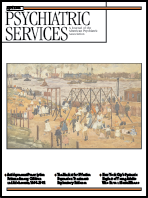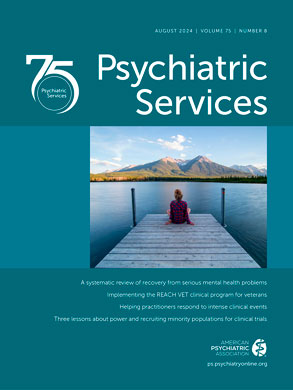As indicated by its title, the goal of this two-volume set is to provide an encyclopedic overview of the range of psychotherapies available in practice today, "a comprehensive reference to extant knowledge in the field…written in clear expository language so that it will be of value to professional and lay persons alike." This is an ambitious—even daunting—aim, and I approached this review with a parallel quandary, feeling incapable of reading through 230 entries contained in some 2,000 pages. I opted for a random-sampling method, reading every tenth entry and then augmenting my reading with selected topics that I either knew well (and therefore could adequately critique) or knew little about (and thus could judge their value to an uninformed reader).
The primary editors-in-chief are a psychologist (Michel Herson) and a psychiatrist and psychoanalyst (William Sledge), the latter an acknowledged expert in psychotherapy practice and education. Entries of typically five to 15 pages describe many diverse forms of psychotherapy, including anger control therapy, art therapy, cognitive-behavioral therapy, dialectical behavior therapy, eye movement desensitization and reprocessing, gestalt therapy, existential psychotherapy, grief therapy, family therapy, logotherapy, rational-emotive behavior therapy, sex therapy, time-limited dynamic psychotherapy, vocational rehabilitation, and many more.
A few of the included therapies, such as "arousal training" and the "job club method," seem like quirky inclusions, and non-Western therapies are essentially omitted—for example, Morita therapy or meditation. A number of self-help therapies are discussed, although 12-step programs modeled after Alcoholics Anonymous are virtually unexamined despite their prevalence and widespread prescription. Other notable omissions include hypnotherapy, psychodrama, and occupational therapy. Most entries are written by an established authority in the particular area or even by the originator of the therapy. This approach ensures expertise about the particular therapy, although the authors' investment in their own methods may compromise objectivity. Because referencing is usually limited to some suggested further readings, the reader is unable to form any independent assessment of each type of therapy. However, the entries generally do provide an excellent orientation to what is distinctive about the therapy and where it may be most usefully applied.
These therapy entries are juxtaposed with entries about specific types of disorders (for example, eating disorders and pain disorders), theories (such as topographic theory and self-psychology), methods (for example, biofeedback, free association, and role-playing), interventions (such as confrontation, homework, and "time out"), research methodology (for example, outcome measures and efficacy), settings (such as telepsychotherapy and primary care behavioral pediatrics), principles (for example, informed consent and confidentiality), and professional procedures (such as documentation and supervision in psychotherapy). I found myself wondering how this array of entries was designed, and I suspect that the original design was lost as the volumes organically emerged. This is not intrinsically a fault, although it is difficult to anticipate what topics will—or won't—be included as one reads through the entries. The editors wisely suggest that a reader use the comprehensive subject index rather than the table of contents to search for a topic.
Overall the selections are strongly skewed toward a cognitive-behavioral perspective, with fewer than 20 percent of entries related to psychoanalytic psychology or its therapy derivatives. This representation may be a consequence of the effort to emphasize therapies for which there is research to support efficacy. A great number of cognitive-behavioral therapy techniques—for example, exposure, desensitization, fading, flooding, relaxation training, and token economy—have separate entries. Some of these—for example, the entry on extinction—are excellent.
The editors also state that the length of each entry is "a reflection of each article's importance to the field." In this context, I was struck that "response-contingent water misting" is covered in eight pages, whereas the unconscious, transference, countertransference, and interpretation are each allotted five pages or fewer, although each of these psychoanalytic entries is a succinct gem. A reader looking for a resource for psychoanalytic principles and approaches is likely to be disappointed. Despite these objections, I found myself captivated after reading a dozen entries. I soon caught myself reading entries I had not "assigned" myself with the enthusiasm of a game show participant eager to discover what is behind the next curtain.
This encyclopedia will not be an essential set for most practicing clinicians. However, it would be a very useful addition to any training program's library. Topic articles can generally stand on their own and many could be used for teaching basic concepts at an introductory level for students in psychology, social work, and nursing as well as medical students or junior residents. As might be predicted, some entries were disappointing. For example, the article on neuropsychological testing was too general to truly inform and included a case example without any explanation of what the testing demonstrated or how it would enhance the clinical formulation or treatment. Some authors showed strong biases, or used the opportunity to grind an axe.
I also noted considerable redundancy among entries—for example, "chaining" and "forward chaining" each have five-page entries to address fairly simple technical procedures. On the other hand, several articles stood out as being remarkably clear and useful. For example, the entries on cultural issues and multicultural therapy offer a great introduction to this complex issue. "Research in Psychotherapy" is a beautiful and current overview of the many dilemmas in defining and studying psychotherapy process and outcome. On balance, these volumes provide a valuable window into a complicated and rapidly expanding field.

